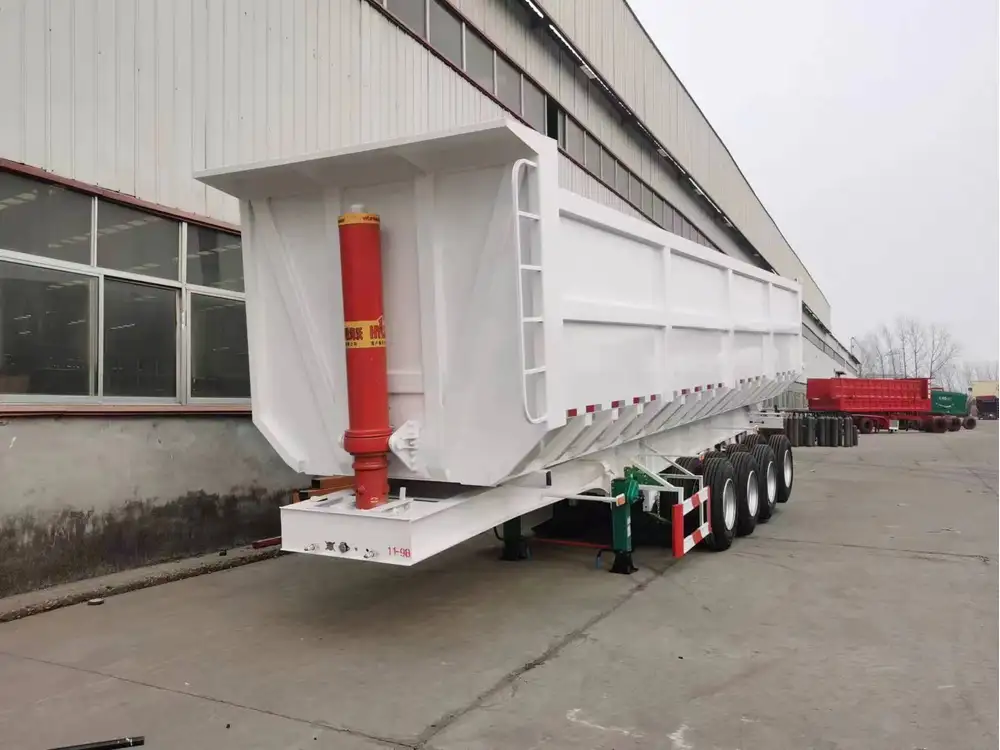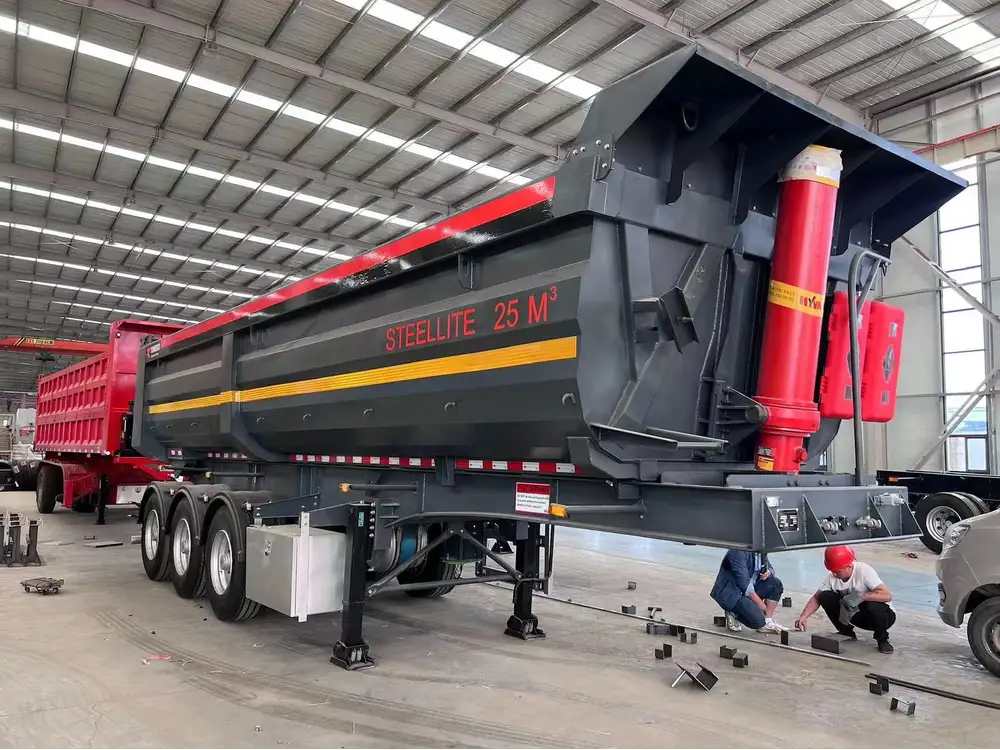Understanding the process of hooking and unhooking a semi-trailer is vital for anyone involved in the logistics, transportation, or trucking industry. Mastering this skill is not just about efficiency but also about safety, ensuring that every movement is executed smoothly and without risk of injury. In this detailed article, we will explore the intricate steps, best practices, and key considerations to properly hook and unhook a semi-trailer.
Table of Contents
- Introduction to Semi-Trailers
- The Importance of Proper Hooking and Unhooking
- Essential Equipment Needed
- Step-by-Step Guide to Hooking a Semi-Trailer
- Step-by-Step Guide to Unhooking a Semi-Trailer
- Safety Tips While Hooking and Unhooking
- Common Mistakes to Avoid
- Maintenance Tips for Trailers and Equipment
- Conclusion
Introduction to Semi-Trailers
Semi-trailers are an essential component of the trucking industry, designed to transport various goods across vast distances. Unlike full trailers, semi-trailers have wheels only on the back end and must be coupled with a prime mover or tractor unit, typically referred to as a “truck”. Understanding how to correctly hook and unhook these trailers is pivotal for operational efficiency and safety on the road.

The Importance of Proper Hooking and Unhooking
Proper hooking and unhooking of semi-trailers are not just procedural necessities; they are crucial elements that guarantee the safety of the driver, cargo, and the driving public. An improperly hooked trailer can lead to accidents, cargo damage, and costly downtimes. Thus, mastering this skill is paramount.
Advantages of Correct Practices:
- Enhanced Safety: Reduces the risk of accidents caused by uncoupled trailers.
- Increased Efficiency: Streamlines loading and unloading processes, saving time and resources.
- Minimized Trailer Damage: Proper procedures help maintain the integrity of both the trailer and the truck.
Essential Equipment Needed
Before beginning the hooking and unhooking process, ensuring you have the proper equipment is essential. The following items are critical:
| Equipment | Purpose |
|---|---|
| Fifth Wheel | Connects the tractor unit to the semi-trailer |
| Pneumatic Lines | Connects airline for brakes and lights |
| Electrical Connectors | Ensures signaling and lighting functions |
| Wheel Chocks | Prevents unintended movement of trailers |
| Safety Gloves | Protects hands during the connecting process |
| Reflective Cones | Enhances visibility around the truck/trailer |

Step-by-Step Guide to Hooking a Semi-Trailer
Preparation Before Hooking
- Inspect the Trailer: Check for visible damage, tire pressure, and ensure the landing gear is fully retracted.
- Align the Truck: Back the tractor unit into the trailer with the fifth wheel pin positioned directly over the coupler.
- Clear the Area: Ensure the area is clear of obstacles and personnel.
Hooking Procedures
- Engage the Fifth Wheel: Slowly reverse until the fifth wheel engages with the trailer’s kingpin. You should hear a click, indicating a proper connection.
- Verify Connection: Pull forward slightly to ensure the trailer is securely attached to the tractor.
- Connect Pneumatic Lines:
- Attach the service line and emergency line to the corresponding fittings.
- Connect Electrical Cables: Plug in the wiring harness to power the lights and brakes.
- Conduct a Safety Check: Before driving off, confirm that all connections are secure and the trailer is stable.

Step-by-Step Guide to Unhooking a Semi-Trailer
Preparation Before Unhooking
- Positioning the Trailer: Drive the truck to a flat, level surface and ensure the trailer is at a complete stop.
- Engage Parking Brake: Engage the truck’s parking brake to prevent movement during unhooking.
- Disconnect Pneumatic Lines: Unplug the air lines from the trailer.
Unhooking Procedures
- Lower the Trailer: Rotate the landing gear crank to lower the trailer to the ground.
- Disconnect the Fifth Wheel:
- Pull the release handle on the fifth wheel to remove the connection from the kingpin.
- Pull Away: Carefully drive the tractor unit forward, ensuring that the trailer remains stationary.
- Inspect the Unhooked Trailer: Ensure that the trailer is on stable ground and that landing gear is fully down.

Safety Tips While Hooking and Unhooking
- Always Wear Protective Gear: Safety gloves and sturdy footwear can minimize injury.
- Use Spotters When Necessary: An extra pair of eyes can be invaluable during complex maneuvers.
- Maintain a Safe Distance: Ensure that bystanders remain at a safe distance during the process.
- Be Aware of Surroundings: Constantly monitor for other vehicles or pedestrians near the working area.
Common Mistakes to Avoid
- Neglecting Inspections: Failing to inspect the trailer and connections can lead to dangerous situations.
- Incorrect Alignment: Improper positioning can lead to missed connections.
- Rushing the Process: Taking shortcuts can compromise safety and efficiency.
- Ignoring Training: Lack of knowledge or training can lead to mistakes; always ensure proper training is undertaken.
Maintenance Tips for Trailers and Equipment
Regular maintenance is essential for ensuring the longevity and safety of semi-trailers and hooking equipment. Here are several best practices:
| Maintenance Task | Frequency | Purpose |
|---|---|---|
| Inspection of Brake Lines | Every Trip | Ensure functionality and safety |
| Lubrication of Fifth Wheel | Monthly | Improves performance and lifespan |
| Tire Pressure Check | Weekly | Enhances fuel efficiency and safety |
| Brake Pad Inspection | Every 6 Months | Ensures proper stopping ability |
| Trailer Lighting Checks | Every Trip | Guarantees visibility on the road |

Conclusion
Hooking and unhooking a semi-trailer is a skill that combines attention to detail, knowledge of the machinery, and an understanding of safety measures. By following the systematic procedures outlined above, operators can ensure they perform these tasks effectively and safely. Emphasizing training, regular maintenance, and adherence to safety standards will not only enhance operational efficiency but will significantly minimize risks involved in the logistics industry. Mastery of these skills forms the backbone of successful trucking operations, ensuring that goods are transported safely and efficiently, maintaining the integrity of both cargo and equipment throughout their journey.



